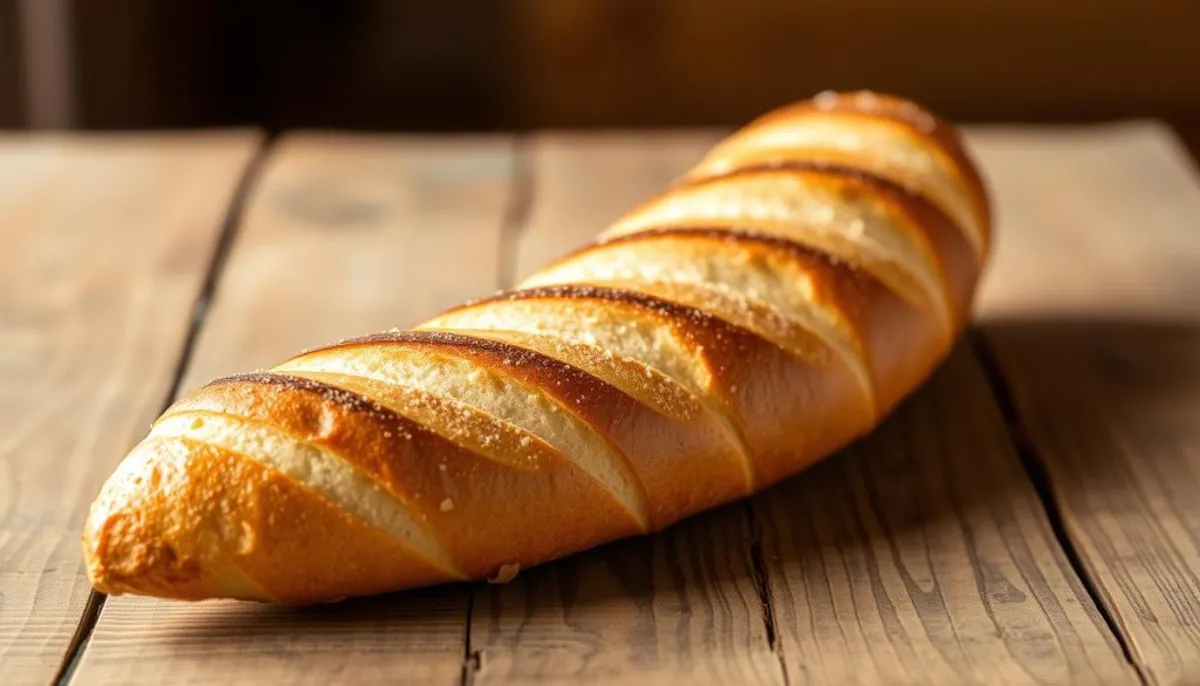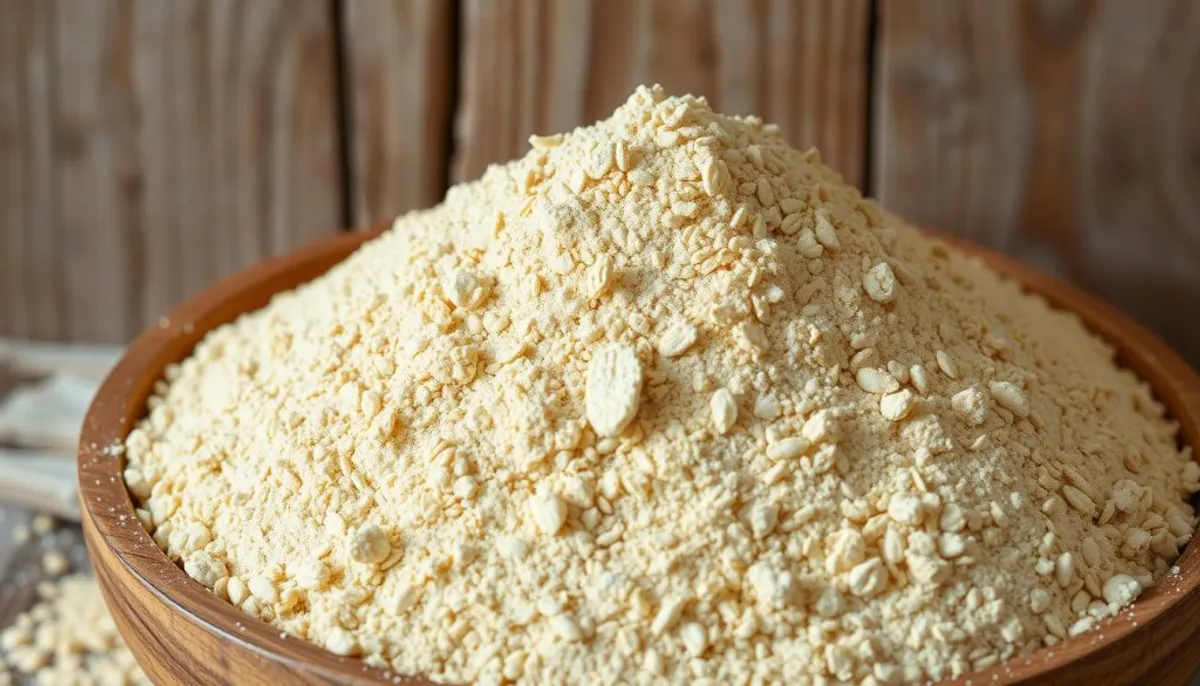The traditional baguette is a national symbol, recognized all over the world. It represents much more than just a simple food. Every day, 30 million baguettes are sold, a testament to the importance of this culinary icon in France.

The evolution of the traditional baguette is deeply rooted in French culinary traditions. Its history begins in the early 20th century, with a law from 1919. This law prohibited bakers from working between 10 PM and 4 AM. This facilitated the emergence of the baguette, which is quicker to prepare than traditional loaves.
The term "baguette" first appeared in Le Figaro in 1920. This marks the beginning of a new era for French bread. Its price has evolved, rising from 0.10 euros in the 1970s to over 0.90 euros in 2021. This reflects its status as a quality product.
The traditional baguette is distinguished by its regulated composition. Since 1993, the law on "French traditional bread" prohibits the use of additives. This ensures an authentic and natural product. This strict regulation helps preserve the unique artisanal know-how that has made French bread famous.
The fascinating history of the French baguette
The history of bread in France is inseparable from that of the baguette, a symbol of culinary traditions. This bread, measuring 65 cm long, has become an emblem of French cultural heritage. Its origin, often perceived as ancient, is actually more recent than one might imagine.
The legends surrounding its origin
Several myths surround the origin of the baguette. Some attribute it to Napoleon's soldiers, others to the workers of the Paris metro. However, its history is much more recent and is rooted in practical logic.
The evolution in the 20th century
The baguette emerged in the early 20th century, a result of the evolution of baking practices and urban demand. In 1919, a law prohibiting night work for bakers encouraged the adoption of this form. It allows for quick baking in 20 minutes. Its popularity grew after World War II, responding to the need for fresh bread several times a day.
| Year | Event |
|---|---|
| 1919 | Law prohibiting night work for bakers |
| 1920 | Popularization of the baguette as a quick baking solution |
| After 1945 | Rise of the baguette with the end of food restrictions |
UNESCO recognition
On November 30, 2022, the traditional baguette was recognized by UNESCO as an intangible cultural heritage. This recognition values artisanal know-how and protects this tradition against industrialization. It highlights the importance of the baguette in the history of French bread and French culinary traditions.
Why traditional baguette: composition and regulation
The traditional baguette is distinguished by its unique composition and strict regulation. This specificity explains why the traditional baguette is so appreciated by the French. With 12 million people visiting bakeries every day, its appeal is undeniable, just like the France Culture stations that are an integral part of cultural life in France.
The 1993 bread decree
The 1993 bread decree rigorously defines the composition of the traditional baguette. This regulation requires the exclusive use of wheat flour, water, salt, and yeast or sourdough. The traditional baguette recipe prohibits any addition of additives, thus ensuring the authenticity of the product.
Noble and natural ingredients
The traditional baguette is made from simple yet high-quality ingredients. The flour used contains about 12.8 g of protein per 100 g, ensuring an optimal texture. Pure water and salt, limited to 4 g per kg of flour, complete this ancestral recipe.

The prohibition of additives
Unlike ordinary baguettes that can contain up to 14 additives, the traditional baguette allows none. This prohibition preserves ancient baking techniques and guarantees an authentic taste. This is one of the reasons why 6 billion baguettes come out of French bakeries annually.
| Characteristic | Traditional Baguette | Ordinary Baguette |
|---|---|---|
| Additives | None | Up to 14 |
| Flour | 100% wheat, T65 minimum | Alternative flours possible |
| Kneading | Slow, 10-15 minutes maximum | No restriction |
| Shaping | Manual or non-volumetric dividers | Varied methods, including volumetric |
The unique artisanal know-how
The traditional baguette embodies the excellence of French artisanal baking. This emblematic bread requires exceptional baking know-how, the result of centuries of ancient baking techniques. Every day, 12 million French people cross the threshold of a bakery to enjoy this national treasure.
The process of making the traditional baguette is a meticulous art. Kneading, a crucial step, requires particular expertise to achieve a perfectly balanced dough. Shaping, in turn, requires precise gestures passed down from generation to generation. As a cultural institution, the traditional baguette represents French know-how. To enrich your knowledge, you can also participate in a general knowledge quiz. Finally, baking, a delicate moment, requires careful monitoring to achieve the ideal golden color.
The numbers speak for themselves: over 6 billion baguettes come out of French bakeries each year. This unique know-how was recognized by UNESCO in 2022, inscribing the artisanal techniques of the baguette in the intangible cultural heritage of humanity.
Despite a decrease in the number of bakeries since 1970, from 55,000 to 35,000 in 2023, artisanal baking remains dynamic. The training of 29,000 apprentices ensures the sustainability of this know-how, thus perpetuating the excellence of French artisanal baking.
The characteristics of a true traditional baguette
The traditional baguette embodies the baking know-how of France. It is distinguished by unique attributes, the result of ancient baking techniques and a proven traditional baguette recipe.
The golden and crispy crust
An authentic traditional baguette is recognized by its golden and crispy crust. This characteristic results from a controlled baking process, usually lasting 25 minutes in a preheated oven. The type T55 flour, chosen for its properties, contributes to this perfect crust.
The perfect alveolation of the crumb
The crumb of a traditional baguette is characterized by ideal alveolation. This airy and light texture is the result of a slow fermentation of 3 hours, much longer than that of industrial breads. The hydration, at 72 liters of water for 100 kg of wheat, also plays a crucial role.
The distinctive slashes
The slashes, these cuts on the surface of the bread, are emblematic of the traditional baguette. They are not just decorative: they allow for optimal expansion of the dough during baking. A true traditional baguette measures between 55 and 65 cm and weighs about 250 grams after baking.
These unique characteristics make the traditional baguette a symbol of French culinary heritage, recognized and appreciated worldwide, just like surfing in France which attracts many enthusiasts.
The role of sourdough in French tradition
Sourdough is essential in the creation of the traditional baguette, symbolizing ancient baking methods. These techniques, rooted in French culinary traditions, give the naturally leavened baguette its distinctive traits.
Natural fermentation
Natural fermentation is the heart of sourdough. It occurs from a mixture of flour and water, left to ferment freely. This approach, different from the use of industrial yeast, promotes the growth of a rich and complex microbial flora. The 1993 decree requires that the sourdough contain at least one billion bacteria and between one to ten million yeasts per gram to be effective.
The impact on taste and preservation
Sourdough profoundly transforms the taste and durability of the traditional baguette. It creates complex flavors and a slight acidity, characteristic of handmade breads. Moreover, it promotes the natural preservation of bread, without the help of additives.
| Characteristic | Naturally Leavened Baguette | Yeast Baguette |
|---|---|---|
| Taste | Complex and slightly tangy | Neutral |
| Preservation | 3-4 days | 1-2 days |
| Texture | Open and elastic | Regular |
| Digestibility | Improved | Standard |
The return to traditional baking methods, embodied by the use of sourdough, responds to a growing demand for authentic and natural products. This trend reinforces the value of the traditional baguette in French culinary heritage.
The importance of traditional flour

Traditional flour is the cornerstone of an authentic baguette. Sourced from wheat grown in France, it is essential in the traditional recipe. Local mills produce it with particular care, thus preserving its nutritional and taste qualities.
In 1993, the French government enacted a law on the making of traditional baguettes. This legislation requires that the baguette be made on-site, using wheat flour, water, yeast or sourdough, and salt. Thus, traditional flour is fundamental in this artisanal process.
To make a traditional baguette at home, about 3.5 cups of bread flour are needed. This quantity ensures an ideal texture. Kneading takes about 10 minutes, followed by an hour of resting. Baking is done at 230°C for 25 minutes.
Artisanal baking highlights this high-quality flour. It is responsible for the golden crust and airy crumb typical of the traditional baguette. It allows bakers to compete in the prestigious "Best Baguette in Paris" contest. This competition celebrates the excellence of French bread each year.
Modern artisanal baking
Artisanal baking in France is experiencing an exciting revival. This field, which is rapidly expanding, combines French culinary traditions with contemporary innovations, while integrating elements from society and cultures. It meets the demands of discerning consumers, always seeking new taste experiences.
The evolution of techniques
The profession of baker is constantly evolving. Artisans are integrating new techniques while preserving the essence of their art. They are turning to modern equipment to improve the quality and consistency of their creations. This is done without compromising the artisanal character that is the basis of their success.
The revival of craftsmanship
Artisanal baking attracts a new wave of enthusiasts. These young bakers bring a touch of creativity and innovation while respecting traditions. They rediscover classics and introduce new flavors, thus enriching the appeal of French baking.
Excellence competitions
Competitions, such as the one for the best traditional French baguette, encourage excellence. They push artisans to surpass themselves and maintain high standards. These events highlight baking know-how and allow for the recognition of the most eminent talents.
| Statistic | Value |
|---|---|
| Turnover of artisanal baking | 11 billion euros |
| Number of bakeries in France | 29,600 |
| Average employment per bakery | 5 people |
| French people consuming bread weekly | 95% |
| Trust in artisanal bakers | 90% |
Artisanal baking remains a fundamental pillar of French culinary traditions. It adapts to current preferences while preserving its authenticity. This ensures the sustainability of this ancestral art, essential to our culinary heritage.
Conclusion
The traditional baguette is the symbol of French cultural heritage. It currently constitutes 25% of bread sales in France, highlighting its crucial role in French cuisine. Despite a decrease in bread consumption, from 330g per day in the 1950s to about 130g today, the traditional baguette remains a pillar of French gastronomy.
This emblematic bread, measuring about 60 cm, is distinguished by a unique manufacturing process. The fermentation time of 15 to 20 hours, compared to 3 to 4 hours for an ordinary baguette, explains the unique flavor and texture of the traditional baguette. This artisanal method, passed down from generation to generation, is a key element of French baking know-how.
Despite a slight decrease in the number of bakeries in France, with nearly 32,000 establishments, the future of the traditional baguette seems assured. Its recognition by UNESCO and the growing enthusiasm for quality artisanal products suggest that this gastronomic treasure will continue to delight the taste buds of the French and enthusiasts worldwide. It will thus perpetuate an essential aspect of French cultural heritage.
RelatedRelated articles


